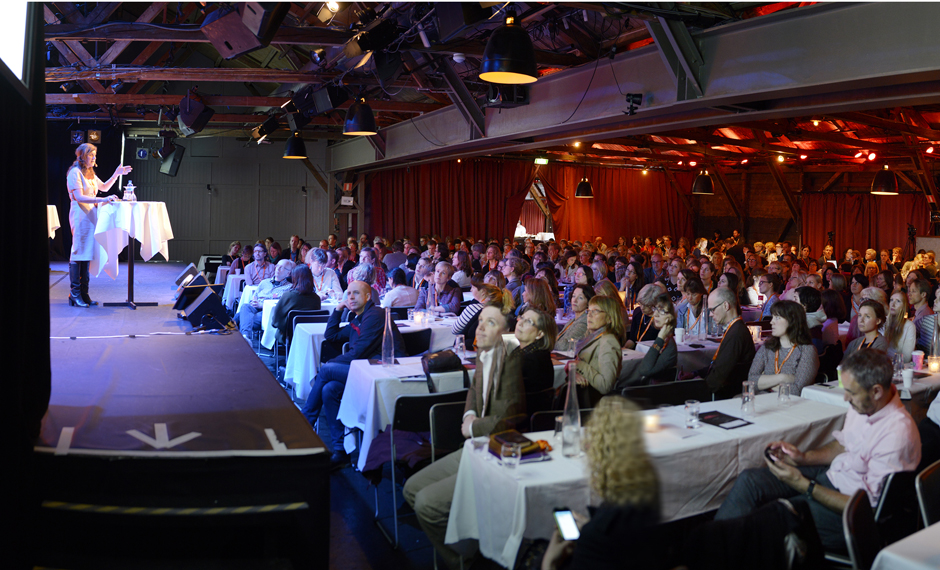Britain is often seen as a leader in public engagement and activity that creates dialogue between scientists, the public, media and politicians. A Science Communication Forum held in April in Gothenburg brought together over 350 science communicators from across Sweden to gain inspiration from four leading British experts on public engagement. The Swedish Minister for Higher Education and Research, Helene Hellmark Knutsson, also participated in the event.

Opening up Research: a quiet revolution
Paul Manners, Director of the National Coordinating Centre for Public Engagement spoke about how public engagement in the UK has changed over the last 15 years. The starting point was the media controversies over BSE (mad cow disease), genetically modified organisms and the MMR (measles, mumps and rubella) vaccine, which led to a crisis in public trust in science and subsequent investment in a number of new initiatives, such as the Science Media Centre, the Sciencewise programme and the “Office for Fair Access”. Paul also spoke about more recent culture changes in universities, particularly with regards to how public engagement is valued, new approaches to assessing the social impact of research, changes to the way funding is allocated and attempts to build ethical and social considerations into the setting of research agendas.
Science and the Media – the view from the front line
The Science Media Centre in the UK is an independent non-profit organisation that works directly with UK national news journalists to provide them with accurate evidence-based information about science and immediate access to scientific experts. Fiona Fox, Chief Executive of the Science Media Centre explained how the SMC works to put journalists in touch with scientists and encourage more scientists to engage with the media, particularly on the big controversial science stories that hit the headlines. Its philosophy is ”We’ll get the media to ’DO’ science better when scientists ’DO’ media better”. Fiona also spoke about the SMC’s funding model and the way it maintains its independence by capping donations from any one institution at 5 per cent of SMC’s annual total income.
Science in the UK Parliament
Most parliamentarians do not have a scientific or technological background but science and technology issues are increasingly integral to public policy. The UK’s Parliamentary Office of Science and Technology (POST) is a non-party political science advisory service for parliamentarians to support them in their decision-making, by keeping them informed about current and emerging science and technology issues and their policy implications. Chris Tyler, Director of POST spoke about the work of POST, such as its written briefings (known as “POSTnotes), seminars, breakfast meetings and a fellowship scheme, in which PhD students spend three months working at POST. As Chris stressed, POST provides an independent and balanced analysis of research and it is up to the politicians to draw conclusions and use them to inform policy, as they see fit. He also talked about the need to be very clear about the level of scientific uncertainty in the research evidence that they present.
A science communication guide to working on YouTube
The Royal Institution of Great Britain, has 125,000 YouTube followers and millions of people from across the world have watched their science films. Dr Gail Cardew, Director of Science and Education at the Royal Institution shared her advice on how organisations can use YouTube to reach large and new audiences. Regarding the ideal length of a science video, Gail said it was a myth that they should be limited to three-minutes long as the RI has had lots of success with longer videos, ranging from 20 minutes to an hour.
Gail also talked about the importance of being consistent, for example by using the same presenter or format, a visual style and release schedule. Viewers also like clear and consistent titles, great thumbnails and organised playlists. She stressed that view counts are not the only metric. She advised matching metrics to your objectives, which might include looking at factors such as demographics (e.g. age, gender) country, minutes watched, subscribers or comments. Her other tips included the importance of collaboration to help your channel grow and bring new inspiration, and also talking to your audience to encourage visitors to return.
At the end of the day, delegates were invited to vote on the best advice that each of the speakers had given during the forum:
Paul Manners: Be clear about why engagement matters. Clarify your rationale.
Fiona Fox: Engaging with the media should not be just for those who enjoy it, but a widely acknowledged part of what it means to be an excellent scientist.
Chris Tyler: Communicating science should also be about working with policy makers.
Gail Cardew: Good public engagement needs continuous investment to flourish. It can’t be done properly as a ‘one-off’ activity or on a ‘next to nothing’ budget.
The Science Communication Forum was organised by the Gothenburg International Science Festival in partnership with the research councils Formas, Forte, the Swedish Research Council and VINNOVA as well as the Knowledge Foundation, Mistra, the Swedish Foundation for Strategic Research and VA (Public & Science).
The whole event was recorded and is available to view on the Gothenburg International Science Festival website
